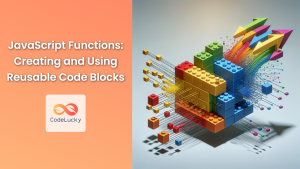Recursion is a powerful programming concept that allows a function to call itself. In C, recursive functions can solve complex problems with elegant and concise code. This article will dive deep into the world of recursion in C, exploring its mechanics, benefits, and potential pitfalls.
Understanding Recursion in C
Recursion occurs when a function calls itself directly or indirectly. Each recursive call creates a new instance of the function, with its own set of local variables. This process continues until a base case is reached, which stops the recursion and allows the function to return its results back up the chain of calls.
Let's start with a simple example to illustrate the concept:
#include <stdio.h>
void countdown(int n) {
if (n == 0) {
printf("Blastoff!\n");
} else {
printf("%d\n", n);
countdown(n - 1);
}
}
int main() {
countdown(5);
return 0;
}
In this example, the countdown function calls itself with a decremented value of n until it reaches zero. Here's the output:
5
4
3
2
1
Blastoff!
🔑 Key Point: Every recursive function must have a base case (here, when n == 0) to prevent infinite recursion.
The Anatomy of a Recursive Function
A well-structured recursive function typically consists of two parts:
- Base case: The condition that stops the recursion.
- Recursive case: The part where the function calls itself with a modified argument.
Let's examine a classic example: calculating the factorial of a number.
#include <stdio.h>
unsigned long long factorial(int n) {
if (n == 0 || n == 1) { // Base case
return 1;
} else { // Recursive case
return n * factorial(n - 1);
}
}
int main() {
for (int i = 0; i <= 10; i++) {
printf("Factorial of %d is %llu\n", i, factorial(i));
}
return 0;
}
This program calculates factorials from 0 to 10. Here's a table of the results:
| n | factorial(n) |
|---|---|
| 0 | 1 |
| 1 | 1 |
| 2 | 2 |
| 3 | 6 |
| 4 | 24 |
| 5 | 120 |
| 6 | 720 |
| 7 | 5040 |
| 8 | 40320 |
| 9 | 362880 |
| 10 | 3628800 |
💡 Fun Fact: The largest factorial that can be stored in an unsigned long long (64-bit) is 20!. Beyond that, you'll need to use specialized libraries for arbitrary-precision arithmetic.
Recursion vs. Iteration
While recursion can lead to elegant solutions, it's not always the most efficient approach. Let's compare recursive and iterative implementations of the Fibonacci sequence:
#include <stdio.h>
#include <time.h>
// Recursive Fibonacci
unsigned long long fib_recursive(int n) {
if (n <= 1) return n;
return fib_recursive(n - 1) + fib_recursive(n - 2);
}
// Iterative Fibonacci
unsigned long long fib_iterative(int n) {
if (n <= 1) return n;
unsigned long long a = 0, b = 1, temp;
for (int i = 2; i <= n; i++) {
temp = a + b;
a = b;
b = temp;
}
return b;
}
int main() {
int n = 40;
clock_t start, end;
double cpu_time_used;
start = clock();
unsigned long long result_recursive = fib_recursive(n);
end = clock();
cpu_time_used = ((double) (end - start)) / CLOCKS_PER_SEC;
printf("Recursive Fibonacci(%d) = %llu, Time: %f seconds\n", n, result_recursive, cpu_time_used);
start = clock();
unsigned long long result_iterative = fib_iterative(n);
end = clock();
cpu_time_used = ((double) (end - start)) / CLOCKS_PER_SEC;
printf("Iterative Fibonacci(%d) = %llu, Time: %f seconds\n", n, result_iterative, cpu_time_used);
return 0;
}
Running this program yields:
Recursive Fibonacci(40) = 102334155, Time: 0.431000 seconds
Iterative Fibonacci(40) = 102334155, Time: 0.000000 seconds
⚠️ Warning: The recursive Fibonacci function has exponential time complexity, making it impractical for large inputs. The iterative version is much more efficient.
Tail Recursion
Tail recursion is a special form of recursion where the recursive call is the last operation in the function. Many modern compilers can optimize tail-recursive functions to be as efficient as loops. Let's modify our factorial function to use tail recursion:
#include <stdio.h>
unsigned long long factorial_tail(int n, unsigned long long acc) {
if (n == 0 || n == 1) {
return acc;
} else {
return factorial_tail(n - 1, n * acc);
}
}
unsigned long long factorial(int n) {
return factorial_tail(n, 1);
}
int main() {
for (int i = 0; i <= 10; i++) {
printf("Factorial of %d is %llu\n", i, factorial(i));
}
return 0;
}
This version of factorial uses an accumulator (acc) to store intermediate results, allowing the compiler to potentially optimize the recursion into a loop.
Solving Complex Problems with Recursion
Recursion shines when dealing with problems that have a recursive structure. Let's explore the classic Tower of Hanoi puzzle:
#include <stdio.h>
void hanoi(int n, char from, char to, char aux) {
if (n == 1) {
printf("Move disk 1 from %c to %c\n", from, to);
return;
}
hanoi(n - 1, from, aux, to);
printf("Move disk %d from %c to %c\n", n, from, to);
hanoi(n - 1, aux, to, from);
}
int main() {
int n = 3; // Number of disks
hanoi(n, 'A', 'C', 'B');
return 0;
}
This program solves the Tower of Hanoi puzzle for 3 disks. Here's the output:
Move disk 1 from A to C
Move disk 2 from A to B
Move disk 1 from C to B
Move disk 3 from A to C
Move disk 1 from B to A
Move disk 2 from B to C
Move disk 1 from A to C
🧠 Brain Teaser: Can you figure out the formula for the number of moves required to solve the Tower of Hanoi puzzle with n disks?
Recursion and Memory
Each recursive call adds a new frame to the call stack, which can lead to stack overflow for deep recursions. Let's demonstrate this with a program that intentionally causes a stack overflow:
#include <stdio.h>
void infinite_recursion(int n) {
printf("Recursion depth: %d\n", n);
infinite_recursion(n + 1);
}
int main() {
infinite_recursion(1);
return 0;
}
This program will continue to make recursive calls until it runs out of stack space and crashes. The exact depth at which this occurs depends on your system's available memory and compiler settings.
Mutual Recursion
Mutual recursion occurs when two or more functions call each other. Here's an example that determines whether a number is even or odd using mutual recursion:
#include <stdio.h>
#include <stdbool.h>
bool is_even(int n);
bool is_odd(int n);
bool is_even(int n) {
if (n == 0) return true;
return is_odd(n - 1);
}
bool is_odd(int n) {
return !is_even(n);
}
int main() {
for (int i = 0; i <= 10; i++) {
printf("%d is %s\n", i, is_even(i) ? "even" : "odd");
}
return 0;
}
This program uses mutual recursion to determine whether numbers from 0 to 10 are even or odd. Here's the output:
0 is even
1 is odd
2 is even
3 is odd
4 is even
5 is odd
6 is even
7 is odd
8 is even
9 is odd
10 is even
Recursion in Data Structures
Recursion is particularly useful when working with recursive data structures like trees. Here's an example of a binary tree traversal using recursion:
#include <stdio.h>
#include <stdlib.h>
struct Node {
int data;
struct Node* left;
struct Node* right;
};
struct Node* createNode(int data) {
struct Node* newNode = (struct Node*)malloc(sizeof(struct Node));
newNode->data = data;
newNode->left = NULL;
newNode->right = NULL;
return newNode;
}
void inorderTraversal(struct Node* root) {
if (root != NULL) {
inorderTraversal(root->left);
printf("%d ", root->data);
inorderTraversal(root->right);
}
}
int main() {
struct Node* root = createNode(1);
root->left = createNode(2);
root->right = createNode(3);
root->left->left = createNode(4);
root->left->right = createNode(5);
printf("Inorder traversal of the binary tree: ");
inorderTraversal(root);
printf("\n");
return 0;
}
This program creates a simple binary tree and performs an inorder traversal using recursion. The output is:
Inorder traversal of the binary tree: 4 2 5 1 3
🌳 Tree Fact: The inorder traversal of a binary search tree will always yield the nodes in sorted order.
Conclusion
Recursion is a powerful tool in a C programmer's arsenal. It can lead to elegant solutions for complex problems, especially those with a naturally recursive structure. However, it's important to use recursion judiciously, considering factors like readability, performance, and stack usage.
Key takeaways:
- Always ensure your recursive function has a base case to prevent infinite recursion.
- Consider the trade-offs between recursive and iterative solutions.
- Be aware of the memory implications of deep recursion.
- Tail recursion can sometimes be optimized by compilers to be as efficient as loops.
- Recursion is particularly useful for problems involving recursive data structures like trees and graphs.
By mastering recursion, you'll be able to write more expressive and powerful C programs. Happy coding!


















